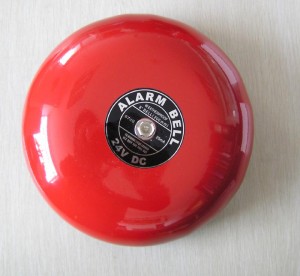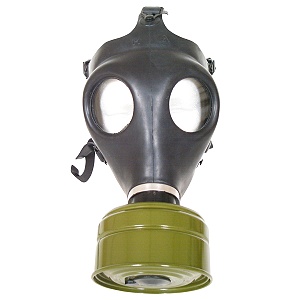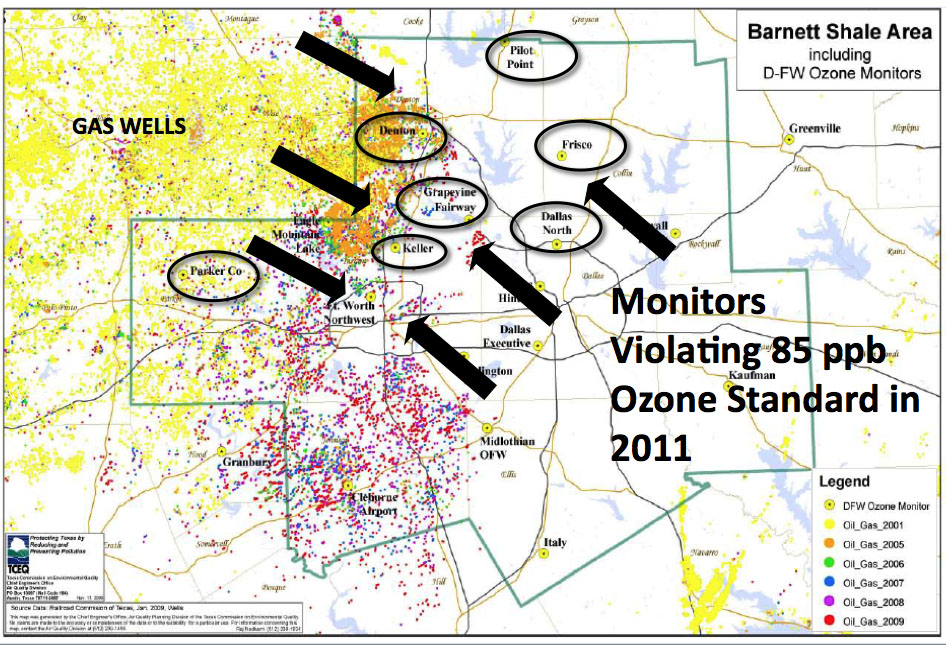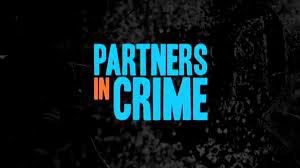TCEQ
Happy Ozone Non-Attainment Day!
 Ozone Non-Attainment Day is a traditional annual DFW event. Every summer there's a day when one or more air quality monitors records its fourth "exceedence" of whatever national ozone standard the region is violating. Then and only then does the monitor officially violate the Clean Air Act and put DFW in "Non-Attainment" of clean air once again.
Ozone Non-Attainment Day is a traditional annual DFW event. Every summer there's a day when one or more air quality monitors records its fourth "exceedence" of whatever national ozone standard the region is violating. Then and only then does the monitor officially violate the Clean Air Act and put DFW in "Non-Attainment" of clean air once again.
Gifts of inhalers, oxygen tanks, and emergency room visits are often exchanged by family members and friends on and around the actual day of Non-Attainment.
This year Governor Perry and the Texas Commission on Environmental Quality made sure our Ozone Non-Attainment Day arrived extra early. Usually, we don't see it come until August. In fact, ever since ozone monitoring began in 1997, there's only been one other year when it came as early as this year.
In 2006, we had Non-Attainment day on June 14th. Boy, that was a doozy of a summer – 12 out of 19 monitors eventually tripping. Think this one might be as big? It's sure possible.
One sign is that the monitor that triggered this year's Non-Attainment Day is the historic Hinton Street site near Mockingbird and I-35. This particular monitor hasn't even recorded a violation of the Clean Air Act since 2005 – so welcome back Hinton Street! But this site has a long and storied Non-Attainment history. The Hinton Street monitor recorded violations for five years straight during some of the worst smog pollution DFW has ever seen, from 2000 to 2005, with some of those years seeing 14 out of 18 monitoring sites recording violations.
So Hinton Street monitor violations are associated with really bad air. So are Non-Attainment Days that arrive in June. We could have one long hellacious summer ozone pollution episode ahead of us this year. Maybe even a return to double-digit monitors in violation. Isn't it exciting?
You may want to send Non-Attainment Day greetings to Governor Perry and TCEQ Chair Bryan Shaw, since it was their idea of watching people buy newer cars as a pollution control strategy, along with ignoring the large increase in smog-forming pollution from the natural gas industry, that made this June Non-Attainment Day possible. (Downwinders reminds you to please breathe responsibly).
“Air Pollution Warning: Level Red”
 Monday turned out to be the single worst day for smog in DFW in 2012. Monitors in Northwest Ft. Worth, Grapevine, North Dallas and Dallas/Hinton Street recorded 8-hour averages of "Level Red" ozone – a level of pollution according to the Texas Commission on Environmental Quality that means,
Monday turned out to be the single worst day for smog in DFW in 2012. Monitors in Northwest Ft. Worth, Grapevine, North Dallas and Dallas/Hinton Street recorded 8-hour averages of "Level Red" ozone – a level of pollution according to the Texas Commission on Environmental Quality that means,
"The highest measured levels of ozone during the previous hour are considered unhealthy. Everyone, especially children, should limit prolonged outdoor exertion. People with respiratory disease, such as asthma, should avoid prolonged outdoor exertion."
Ten monitors exceeded the old 1997 eight-hour 85 ppb standard and those same three – Ft. Worth Northwest, Hinton and Arlington Airport, averaged over 100 ppb for eight hours or more.
In fact, Arlington saw a one-hour high of 128 ppb – an "exceedence" of a standard more than 20 years old – and it's 107 8-hour average on Monday was the highest at any DFW monitor since 2007.
The Hinton Street monitor recorded it's third exceedence since March. One more and DFW will once again be in non-attainment with the Clean Air Act, for the 21st year in a row. Four others recorded their second exceedence.
Last year it took us into the middle of Summer before that happened. This year it may occur during the first week of Summer. This is what Governor Perry and TCEQ call progress.
Halfway to Failure
 (Late Monday evening update: It's clear that the Hinton Street monitor will record its third "exceedence" of the 85 ppb standard this year, putting it just one away from making the entire region non-attainment" in 2012.)
(Late Monday evening update: It's clear that the Hinton Street monitor will record its third "exceedence" of the 85 ppb standard this year, putting it just one away from making the entire region non-attainment" in 2012.)
It's a bad sign when there are ozone problems on the weekends. It means that even with less people on the road and many businesses on less than full throttle, there's still enough pollution to cause trouble. And it usually means a rough week ahead. That's what happened on Sunday, when summer finally caught up with DFW in a big way.
Four area ozone monitors set new annual highs set on Sunday, and many others saw very alarming numbers during the afternoon. There were three "exceedences" of the old 1997 85 parts per billion ozone standard, and one of those was the second time the Dallas Hinton Street site had seen an 8-hour average above 85 this year. Six other monitors have already had their first. And it's only June.
Four such exceedences within a year puts a monitor in official violation of the obsolete standard that DFW is still struggling to meet. So with the Hinton Street results, we're already halfway to being out of compliance with the 1997 standard again. But it's all academic. Everything is now geared toward meeting the new 75 parts per billion ozone standard by 2018. DFW could be in violation of the old standard every year from now until then, and except for the terrible toll on public health, there'd be no penalty from either the EPA or TCEQ.
On the other hand, its going to be pretty hard to meet that new, harder standard when you haven't been meeting the old, easier one.
The state's official response is mostly to sit back and hope that DFW drivers trade in their older, more polluting cars for cleaner, newer ones. That phenomena was supposed to be responsible for making this year the best one for clean air in decades. According to the Texas Commission on Environmental Quality's computer modeling, no DFW monitor will violate the Clean Air Act for ozone pollution in 2012. At least, that's what they told the EPA when they submitted the region's clean air plan to the feds in December. And the EPA bought it. Because the TCEQ computer modeling said everything was hunky-dory.
But reality has a way of rudely intruding on TCEQ's computer modeling. Only six months into the new plan and most of the DFW monitor averages predicted by the state are already underestimates. We had the highest ozone levels ever recorded in March. Maybe there's just not enough of you trading in your cars.
 Or maybe it's just that old TCEQ junk science at work. One thing we know the state's computer model didn't consider was how already-dirty air makes the VOC pollution from natural gas operations more easily convert into ozone pollution. Denver officials who are also dealing with new gas operations contributing to long-standing smog problems have considered this factor and think it explains larger than expected ozone readings there.
Or maybe it's just that old TCEQ junk science at work. One thing we know the state's computer model didn't consider was how already-dirty air makes the VOC pollution from natural gas operations more easily convert into ozone pollution. Denver officials who are also dealing with new gas operations contributing to long-standing smog problems have considered this factor and think it explains larger than expected ozone readings there.
TCEQ chose to ignore this variable. Supposedly because the gas patch was well west of DFW and "couldn't possibly" affect North Texas ozone levels. But as anyone who's driven I-30 or I-20 over the past ten years can tell you, the gas patch extends all the way from east of Denton to Grand Prairie to Midlothian, encompassing most of the 9 county non-attainment area. In the same December 2011 clean air plan the state predicted record-low ozone levels this year, it also estimated that gas industry sources were emitting 34 tons per day more smog-forming VOC pollution than all the cars and trucks in DFW combined.
It was a political decision not to look at how dirty air from Houston, the East Texas coal plants, the Midlothian cement kilns and everything else east of Weatherford makes gas industry emissions more likely to cause ozone in North Texas. TCEQ's clean air plans are always full of such decisions that drive the final results of its supposedly objective computer modeling. Hard to believe now, but there was a time in the not-so-distant-past that the same computer modeling made it clear that the Midlothian cement plans "couldn't possibly" be affecting DFW ozone levels.
A plan to meet the new 75 ppb standard must be submitted to EPA by 2015 to show three years of compliance by 2018. That's only two-years away. If new cars alone can't get us down below 85, it will be extremely difficult for the state to argue they can get us down to 75. More actual things that work to reduce pollution will be necessary. Including bringing better controls to the cement kilns and coal plants and other industries still putting out way too much pollution. It will be a fight. but so far, the evidence is that more is needed if DFW is ever going to have safe and legal air.
Partners in Crime: TCEQ Lets Exide Lead Smelter Air Plan Deadline Pass
 Yeah, it's supposed to close by the end of the year. But that shouldn't mean the Exide lead smelter gets an even larger free pass to keep breaking the law on its way out the door.
Yeah, it's supposed to close by the end of the year. But that shouldn't mean the Exide lead smelter gets an even larger free pass to keep breaking the law on its way out the door.
Under the Clean Air Act, the facility is still subject to a clean-up plan for lead emissions that are violating the new federal lead-in-air standards passed in 2008. It's called a "State Implementation Plan," or SIP, because the state environmental agency, in this case the Texas Commission on Environmental Quality, is supposed to submit it to EPA for approval. The deadline for submitting Exide's SIP is July 1st, so the EPA has the required six months for public comment and processing through the Federal Register by the time the standard takes effect in December. As of today, the agenda for the last TCEQ Commissioners meeting in June did not have the Exide SIP on it.
It's true that the smelter doesn't have to start meeting that new standard until less than a month before it's scheduled closing via the agreement Exide and the City of Frisco announced in late May (and it's been exeeding that standard pretty regulalry since Spring began). But the adoption of a SIP could have put a nice regulatory bow on the package that the company and city have already prepared, and given the state the chance to tie up lots of loose enforcement ends.
By not submitting the SIP to EPA on time, the TCEQ is in violation of the law. What EPA will do about that is unknown, although its advocacy on behalf of Frisco residents over the long history of the smelter has been less than comprehensive and enthusiastic. Even now, neither it nor TCEQ have announced any fines or enforcement measures despite finding plenty of evidence of violations over the last three years' worth of inspections, much less the documented 30-year history of chronic abuses found in the agencies' files.
What might be some of the real world consequences of TCEQ lawbreaking this time? More lead air pollution and lead exposure to Frisco residents in the next six months than would otherwise have been allowed and more contamination of the land the City of Frisco has already bought and must pay to clean-up. A good thing to remember is how the company phased-out its Dixie Metals smelter in Dallas when it was forced to close by a December 31st 1990 deadline by the city. There was full production at the smelter until 12 Midnight, December 31st.
The official apathy of the state and federal agencies regarding Exide's criminal past and present has been breathtaking at times. So far, this missed SIP deadline seems to be one more yawnfest for them. Which is all the more reason citizens have to keep a vigilant eye on things even after the hoopla is over and the important work of cleaning-up a half-century's worth of poisons begins. Environmental protection is a do-it-yourself proposition.
Judge Strikes Down TCEQ Permit for Corpus Coal Plant
 Example Number Too Many to Count of why you just can't trust the Texas Commission on Environmental Quality to be the watchdog they're supposed to be. Last year the state agency awarded a permit to the $3 billion Las Brisas coal-fired power plant in Corpus Christi last year over the objections of the EPA, AND two of its own Administrative Law Judges. When that happened, the Sierra Club and Environmental Defense sued. Yesterday they won when a District Court Judge issued a ruling that will send the plant back to TCEQ for an new air quality review. "Here, the worst-case scenarios factually and legally were not modeled," the Judge wrote.The opinion letter concludes by stating that the ruling may require an additional hearing or briefing to determine whether a permit reversal, or reversal and remand is appropriate. It's not surprising the TCEQ gave the plant a permit. They'll give a permit to just about anyone or thing that asks for it. But they usually don't get slapped down for it these days. Good for Sierra and EDF to call them out and win
Example Number Too Many to Count of why you just can't trust the Texas Commission on Environmental Quality to be the watchdog they're supposed to be. Last year the state agency awarded a permit to the $3 billion Las Brisas coal-fired power plant in Corpus Christi last year over the objections of the EPA, AND two of its own Administrative Law Judges. When that happened, the Sierra Club and Environmental Defense sued. Yesterday they won when a District Court Judge issued a ruling that will send the plant back to TCEQ for an new air quality review. "Here, the worst-case scenarios factually and legally were not modeled," the Judge wrote.The opinion letter concludes by stating that the ruling may require an additional hearing or briefing to determine whether a permit reversal, or reversal and remand is appropriate. It's not surprising the TCEQ gave the plant a permit. They'll give a permit to just about anyone or thing that asks for it. But they usually don't get slapped down for it these days. Good for Sierra and EDF to call them out and win
